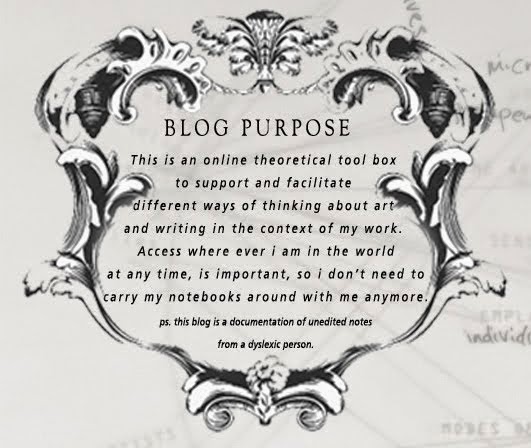This was a 4 minute experimental semi poetic text to clarify to me:
The authors creative motivation to write junkspace
And suggest possible historical and contemporary links.
This also has some examples at the bottom of how my work links to this idea.
This also has some examples at the bottom of how my work links to this idea.
Junspace is:
Human debris.
Residue of mankind.
A product of modernisation.
The evolution of metropolis.
Airport noise and pollution
of every… kind.
It is
simulated order, traffic on vacation.
Junkspace is beyond measure
In 2012.
Will we now find Junkspace
In outer space, in the body –
in our DNA
through cosmetic implants and
the mobile phone.
fashion, linguistics Mass
media and the arts?
Is it Poststructuralist text?
Koolhaas’s meanings and notions are unfixed.
He is a Surrealist conceptual
artist/architect.
Who uses books, architecture
and texts as his medium
to creatively express his
concerns about
expanding urban modernity. Yes
I believe Dali’s
‘paranoid-critical method’ which is a description of something by its exact
opposite.
Has been adopted by Koolhaas
in his creative process.
It has inspired ridiculous
rhythms that liberate him, enable him
to escape analysis, contradict
and multi layers script.
Koolhaas coins the term
JUNKSPACE in order to define the problem Of urban modernity which he aims to
solve through
His Architecture.
Is junkspace a 2002 postmodern
transcription
Of 1929 Hugh Ferris’s
optimistic illustration of ‘The metropolis of tomorrow’ ?
Or a transcription of 1980’s Lefebrve’s
(.) ‘City, seen through the window”?
Koohaas
is partly answering Henri’s concern for ‘Capitalism being in contempt of human
needs’ through his architecture but he continues
to raise his own questions on the subject.
Koolhaas the provocateur says:
‘…The vastness of capitalism erodes what
architecture should be’.
Koolhaas uses architecture
that works with the body
to navigate crowds of the
city in a better way.
‘To restore a kind of honesty
and clarity to the relationship
between architecture and
public”… (introduction to SMLXL)
I believe I found his antidote to Junkspace.
Last week Koolhaas was on the
shortlist
for this years architectural Stirling prize.
‘The Maggie Centre’ in
Glasgow Is 50% landscape.
The building welcomes the body,
creates a sense of safety,
peace and rest,
no corridors, stairs or
mundane domestic glimpses.
He has created Harmony
between the internal and external space.
I am particularly interested
in the Jungian concept of coniunctio.
I see this between Koolhaas’s
junkspace text and his architecture.
I believe they are truly a
marriage of opposites.
I
now see Behn Zeitlin also attempting to repair
A
sense of A displaced modernity
through
his inspirational
post apocalyptic film
recently
released called:
‘Beasts
of the Southern wild’.
Shows
how the human spirit
can triumph over tragedy
brought by Hurricane Katrina.
can triumph over tragedy
brought by Hurricane Katrina.
Has
Urban life made us loose our connections with our natural surroundings and made
us less resilient in the face of disasters?
Who else is trying to address
this?
Who else is trying to
counteract the negative effects modernity, who else is acknowledging the body
and the individual?
And how are they doing it?
Dali’s
‘paranoid-critical method’ is a description of something by its exact
opposite.
Has been adopted by Koolhaas
in his creative process.
It has inspired ridiculous
rhythms that liberate him, enable him
to escape analysis, contradict
and multi layers script.
CONCLUSION:
What do i have in common with rem Koolhaas?
we both do- transformation through paradox? we find a paradox and try to remedy it. our work isn't just one sided.
we both get to know the exact opposite of what we want to create in the world.
EXAMPLES:
The concept of coniunctio in a photograph and 2 films (just click on the image to open the film):


http://www.flickr.com/photos/94987236@N06/8651939902/
Junkspace bibliography
Architectural design Vol 48 no2-3 1978 p117.
Fantastic cities: Peter Inch’s voyage through the surrealist
city in history.
Architectural design Vol 48
no2-3 1978 p153
Rem Koolhaas
‘biuer ai bring ou surrealism aulredi meni pipoul in niu
york jove bin infected bai zi laifquiving and marvellous sors of surrealism’.
Architecture at Rice 30 1996.
Rem Koolhaas; conversations with students.
S,M,L,XL OMA Rem Koolhaas and
Bruce Mau. The monacelli press 1995.





